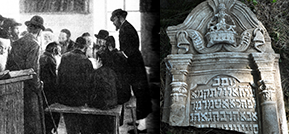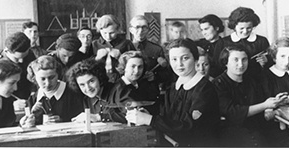Rabbi Meir Wunder, the leading scholar and documenter of the Torah world in Galicia, has passed away

Rabbi Wunder was born in Nesher, near Haifa, to parents of Galician origin. He received a religious education at the Yavneh school in Haifa, the Hafetz Hayim yeshiva in Kfar Saba, and Ponevezh in Bnei Brak. While still a student in Ponevezh, he began to specialize in the field of librarianship, with an emphasis on Torah literature. At the request of the Rosh Yeshiva, the late Rabbi Yosef Shlomo Kahneman, he was entrusted with the yeshiva’s large book collection. During his tenure, the number of books in the yeshiva increased from about 1000 to approximately 25,000.
After his studies – alongside a brief stint teaching in both transit camps and established cities – he continued his work as a librarian, making it his primary field of work. Initially, he managed the Torah Library in Ramat Gan, the Teachers’ Union Library, and the Sheqel Library in the settlements of Shapir, Kiryat Gat, and Lachish for short periods. From the early 70s with his move to Jerusalem, he was in charge of the Legal Deposits Department at the National Library, until his retirement about thirty years later.
Rabbi Wunder made a significant contribution to the field of Torah library science by creating a cataloging system that adapts the Dewey system, which is accepted in most leading libraries around the world, to a Torah library. His method formed the basis for the classification systems of the libraries at Yeshivot HaKotel, Har Etzion, Sha’alvim, and Kerem BeYavneh. He was also the founder of the Center for Torah Libraries and served as its chairman.
His work with libraries was intertwined from an early stage with his work in the field of Hebrew bibliography, primarily in the field of Torah literature. Already in the 1960s, he edited the first issue of Tagim, a research journal of rabbinic bibliography. His central work in bibliography was the compilation of an index of halakhic Torah articles that appeared in Torah journals, memorial books, jubilee books, and daily newspapers. The index was first published in the books he edited, “Meir Einayim” (1–3, 1967–1969) and “Meir LeZion” (1–2, 1970–1979), as the “Meir LeZion” section in the Techumin journal (1982–2000), and today it is incorporated into the Responsa Project. Another product of his work is an index of articles on Halakha and medicine, which appeared annually in the journal Asia (1983—2014). The last index he created, “Einekha Ha-Ro’ot” [Your Eyes That See] (2009), is of articles about rabbis who passed away in the two generations prior to its publication.
Another of Rabbi Wunder’s projects was the editing of the journal Sanz: Torah, Avodah and Gemilut Hasadim: Bit'on Agudat Hasidim Sanz-Klausenburg [Sanz: Torah, Divine Service and Benevolence: a Journal of the Association of Sanz-Klausenburg Hasidim] which he took upon himself to edit and develop at the request of the Sanzer Rebbe, Rabbi Yekutiel Yehuda Halberstam in the mid-70s, and of which he published nearly a hundred issues. He also published numerous scholarly articles in Torah newspapers, including in Tsefunot, Techumin, Hama'yan, Moriyah, Hamodia, Shearim, Diglenu, and Kehal Machzikei Hadas of the Belz Hasidim (the early incarnation of Hamahaneh ha-Haredi).
Alongside his various activities and contributions, in which he earned a reputation as a leader in the fields of Torah librarianship, bibliography, and journalism, there is no doubt that his main life work, to which he dedicated himself for decades, is his research on Galician Jewry, and especially on the Torah scholarship there. The result of this dedication is his six-volume book Me’orei Galitziah: Entziklopediah le-Hakhmei Galitziah [The Lights of Galicia: An Encyclopedia for Galician Sages] (1978–2005), about the rabbis of Galicia from the beginning of Austrian rule in 1772 to the present day, and the accompanying volumes, Elef Margaliyot – on the history of the Margaliyot family (1993) and Kehilot Ve-Ishim Be-Galitziah [Communities and Personalities in Galicia] (1995).
These books are primarily comprised of encyclopedic entries on rabbis and public figures from the Torah world. Rabbi Wunder gathered the information, sometimes even tiny fragments, from a vast array of sources. These included the writings of the subjects of the entries, biographies about them, responsa literature, calendars, introductions, subscriber lists for books, community memorial books, newspapers and periodicals of the time in various languages, archival materials, and an array of interviews and correspondence with the personalities’ relatives, and Galician Jewish emigrants in general. All of this was done to provide an entry for each person that reflects as accurately as possible his history, writings, actions, method, family, and descendants.
Decades after the destruction of Galician Jewry in the Holocaust, Rabbi Wunder, a native of Israel but a son of Galician emigrants, embarked on this great memorial project for the Galician Torah world. This project commemorates what was destroyed, but also maps its branches and continuations in various places around the world, with the aim of passing on its heritage to future generations. As he stated in the introduction to the first volume of Me’orei Galitziah, “Our generation, uprooted from its sources of growth and nourishment, yearns to know the springs of its past. A new generation of young people has arisen in Israel, Europe, and America, that yearns for the roots of its heritage, which it has not had the opportunity to get to know directly and without intermediation. The figures of the luminaries of Israel, the heads of the Diaspora illuminate with precious light, in the sense of ‘And your eyes shall see your teacher’” (p. 12).
In addition to these books, which focus on thousands of Torah figures, rabbis, and rabbinical dynasties, Rabbi Wunder has published a series of works illuminating other aspects of the Torah world of Galician Jewry. These include the articles “Ha-Defus Ha-‘Ivri Be-Yaroslav” [The Hebrew Press in Jarosław] (1989), “Ha-Yeshivot Be-Galitziah” [The Yeshivas in Galicia] (1992), “Parshanut Ha-Miqra Be-Galitziah” [Biblical Interpretation in Galicia] (1992), “Terumatah shel Yahadut Galitziah Le-‘Olam Ha-Halakhah” [The Contribution of Galician Jewry to the World of Halakha] (1999), “Ro’ei Penei Ha-Besht Be-Galitziah” [Those who Encountered the Baal Shem Tov in Galicia] (2000), and “Parshanut Ha-Rambam Be-Galitziah” [Maimonides’ Interpretation in Galicia] (2005). He also published the book Hod Ve-Hadar: Seridei Omanut Yehudit Be-Galitziah [Splendor and Glory: Remnants of Jewish Art in Galicia], dedicated to Eastern Galicia.
The writings of Rabbi Wunder on the world of Torah in Galicia during the modern era are foundational to the study of this diaspora, one of the most significant in the history of the Jewish people in the modern era. Many research works are based on them, and as his insights become more widespread, both scholarly and public engagement with this field is expanding.
To produce the massive encyclopedic work Me’orei Galitziah, Rabbi Wunder established the Institute for the Commemoration of Galician Jewry in the late 70s, through which he published his books. In 2011, the institute expanded its activities to include additional areas of research and documentation and its name was changed to the Jewish Galicia and Bukovina Organization. Rabbi Wunder continued to play key roles in the association’s activities until his last days, greatly assisting it in achieving its/his goals. The association had the privilege of publishing his last book, Kehilot Ve-’Ishim Be-Galitziah [Communities and Individuals in Galicia], and also uploaded a scanned version of Me’orei Galitziah to its website.
The association mourns the passing of this wise and exceptional scholar, the warm and humble man who contributed more than anyone else to the research, documentation, and commemoration of the Torah heritage of Galician Jewry. May his memory be a blessing.






